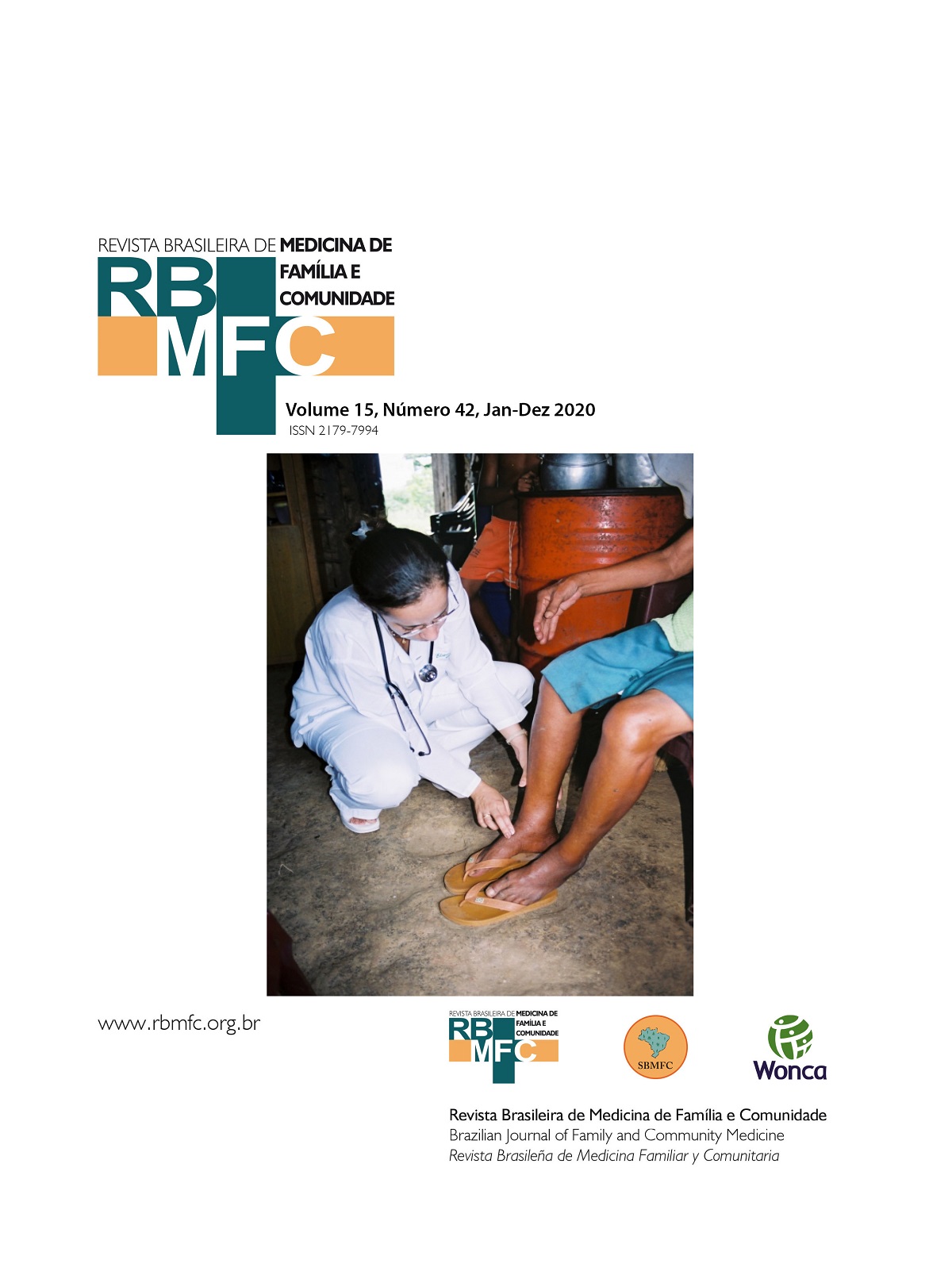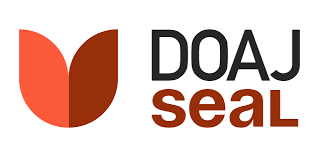Patients with type 2 diabetes mellitus using drugs by filing lawsuits
is there clinical and laboratory monitoring?
DOI:
https://doi.org/10.5712/rbmfc15(42)2561Keywords:
Diabetes Mellitus, Type 2, Health’s Judicialization, Access to Information, Pharmaceutical Services, Universal Health InsuranceAbstract
Introduction: The continuous increase in the number of health judicialization processes, the epidemiological relevance of type 2 diabetes mellitus (DM2), the scarcity of resources used to monitor the investments of lawsuits, and their high cost to public health, that said there is a need for studies that analyze the profile of the judicialization of antidiabetics, which is the main class of drugs targeted by lawsuits. Objective: To analyze whether patients with DM2 attended by judicial system, are followed up and monitored in Brazilian Public Health System (SUS) before and after judicial proceedings. In addition to analyzing the profile of drugs legalized for the treatment of DM2. Methods: A retrospective observational study, which secondary database, medical records and judicial files, was conducted with 56 patients with DM2 who have acquired at least one of their medicines through lawsuits, in 2019, in a city in Minas Gerais. The data were analyzed 12 months before and 12 months after judicialization process. Results: Among the 56 lawsuits, 39% were concentrated in only three health units. Only 30 patients (53%) before and 29 (51%) after judicialization had appointments in SUS. Furthermore, only 15 (26%) and 13 (23%) patients, respectively before and after judicialization, had some laboratory test performed by SUS. The insulins Levemir Flex Pen® (13%), Novo Rapid® (11%), and Lantus® (7%) were the most judicialized drugs. Conclusion: It was observed that despite the SUS providing the high-cost therapeutic input through an unconventional gateway, there is no clinical and laboratory monitoring to evaluate the effectiveness of the technology, as recommended by clinical protocols and Brazilian laws about access to medicines.
Downloads
Metrics
References
(1) Ministério da Justiça (BR). Constituição da República Federativa do Brasil de 1988. Diário Oficial da União, Brasília (DF), 05 out 1988.
(2) Lei nº 8.080, de 19 de setembro de 1990 (BR). Lei orgânica da saúde. Dispõe sobre as condições para a promoção, proteção e recuperação da saúde, a organização e o funcionamento dos serviços correspondentes e dá outras providências. Diário Oficial da União, Brasília (DF), 19 set 1990.
(3) Catanheide ID, Lisboa ES, Souza LEPF. Características da judicialização do acesso a medicamentos no Brasil: uma revisão sistemática. Physis. 2016;26(4):1335-56. DOI: https://doi.org/10.1590/s0103-73312016000400014
(4) Chagas VO, Provin MP, Mota PAP, Guimarães RA, Amaral RG. Institutional strategies as a mechanism to rationalize the negative effects of the judicialization of access to medicine in Brazil. BMC Health Serv Res. 2020 Fev;20(1):80. DOI: https://doi.org/10.1186/s12913-020-4929-9
(5) Santos ECB, Teixeira CRS, Zanetti ML, Istilli PT, Pereira LHTR, Torquato MTCG. Judicialização da saúde: acesso ao tratamento de usuários com diabetes mellitus. Texto Contexto - Enferm. 2018;27(1):e0800016. DOI: https://doi.org/10.1590/0104-070720180000800016
(6) Paim LFNA, Batt CR, Saccani G, Guerreiro ICK. Qual é o custo da prescrição pelo nome de marca na judicialização do acesso aos medicamentos?. Cad Saúde Coletiva. 2017;25(2):201-9. DOI: https://doi.org/10.1590/1414-462x201700020022
(7) Vargas-Pelaez CM, Rover MRM, Soares L, Blatt CR, Mantel-Teeuwisse AK, Rossi FA, et al. Judicialization of access to medicines in four Latin American countries: a comparative qualitative analysis. Int J Equity Health. 2019 Jun;18(1):68. DOI: https://doi.org/10.1186/s12939-019-0960-z
(8) Ministério da Saúde (BR). Resolução nº 338, de 06 de maio de 2004. Aprova a Política Nacional de Assistência Farmacêutica. Diário Oficial União, Brasília (DF), 06 mai 2004.
(9) Nisihara RM, Possebom AC, Borges LMC, Shwetz ACA, Bettes FFB. Judicial demand of medications through the Federal Justice of the State of Paraná. Einstein (São Paulo). 2017;15(1):85-91. DOI: https://doi.org/10.1590/s1679-45082017gs3792
(10) Chieffi AL, Barradas RDCB, Golbaum M. Legal access to medications: a threat to Brazil’s public health system?. BMC Health Serv Res. 2017 Jul;17(1):499. DOI: https://doi.org/10.1186/s12913-017-2430-x
(11) Decreto nº 7.508, de 28 de junho de 2011 (BR). Regulamenta a Lei no 8.080, de 19 de setembro de 1990, para dispor sobre a organização do Sistema Único de Saúde-SUS, o planejamento da saúde, a assistência à saúde e a articulação interfederativa, e dá outras providências. Diário Oficial da União, Brasília (DF), 19 set 2011.
(12) Lei nº 12.401, de 28 de abril de 2011 (BR). Altera a Lei nº 8.080, de 19 de setembro de 1990, para dispor sobre a assistência terapêutica e a incorporação de tecnologia em saúde no âmbito do Sistema Único de Saúde – SUS. Diário Oficial da União, Brasília (DF), 19 set 2011.
(13) International Diabetes Federation (IDF). IDF diabetes atlas. 9th ed. Brussels: FID; 2019.
(14) World Health Organization (WHO). World health statistics 2018: monitoring health for the SDGs, sustainable development goals. Geneva: WHO; 2018.
(15) Sociedade Brasileira de Diabetes (SBD). Diretrizes sociedade brasileira de diabetes 2019-2020. São Paulo: Clannad Editora Científica; 2019.
(16) Paixão ALS. Reflexões sobre a judicialização do direito à saúde e suas implicações no SUS. Ciênc Saúde Colet. 2019;24(6):2167-72. DOI: https://doi.org/10.1590/1413-81232018246.08212019
(17) Rodrigues NLP, Zaia V, Viana JM, Nascimento PR, Montagna E. Economic evaluation of an active search system to monitor the outcomes of health-related claims. Einstein (São Paulo). 2019;18:eGS5129. DOI: https://doi.org/10.31744/einstein_journal/2020GS5129
(18) Instituto Brasileiro de Geografia e Estatística (IBGE). Estimativas da população residente no Brasil e unidades da federação com data de referência em 1° de julho de 2019 [Internet]. Rio de Janeiro (RJ): IBGE; 2019; [acesso em 2020 Abr 05]. Disponível em: https://www.ibge.gov.br/estatisticas/sociais/populacao/9103-estimativas-de-populacao.html?=&t=resultados
(19) Camargos AMT, Gonçalves ACO, Cazarim MS, Sanches C, Pereira LRL, Baldoni AO. Patients lacking glycemic control place more burdens on health services with the use of medications. Diabetes Metab Syndr. 2017 Dez;12(3):279-83. DOI: https://doi.org/10.1016/j.dsx.2017.12.010
(20) Carvalho RC, Nishi FA, Ribeiro TB, França GG, Aguiar PM. Association between intra-hospital uncontrolled glycemia and health outcomes in patients with diabetes: a systematic review of observational studies. Curr Diabetes Rev. 2020 Jan 29; [Epub ahead of print]. DOI: https://doi.org/10.2174/1573399816666200130093523 DOI: https://doi.org/10.2174/1573399816666200130093523
(21) Nishijima M, Sarti FM, Vodenska I, Zhang G. Effects of decentralization of primary health care on diabetes mellitus in Brazil. Public Health. 2019 Jan;166:108-20. DOI: https://doi.org/10.1016/j.puhe.2018.10.005
(22) Salci MA, Meirelles BHS, Silva DMGV. Atenção primária a pacientes com diabetes mellitus na perspectiva do modelo de atenção às condições crônicas. Rev Latino-Am Enfermagem. 2017;25:e2882.
(23) Cruz‐Cobo C, Santi‐Cano MJ. Efficacy of diabetes education in adults with diabetes mellitus type 2 in primary care: a systematic review. J Nurs Scholarsh. 2020 Mar;52(2):155-63. DOI: https://doi.org/10.1111/jnu.12539
(24) Nogueira M, Otuyama LJ, Rocha PA, Pinto VB. Pharmaceutical care-based interventions in type 2 diabetes mellitus: a systematic review and meta-analysis of randomized clinical trials. Einstein (São Paulo). 2020;18:eRW4686. DOI: https://doi.org/10.31744/einstein_journal/2020RW4686
(25) American Diabetes Association (ADA). 10. cardiovascular disease and risk management: standards of medical care in diabetes – 2019. Diabetes Care. 2019 Jan;42(Supl 1):S103-S23. DOI: https://doi.org/10.2337/dc19-S010
(26) Maduro LCS, Pereira LRL. Processos judiciais para obter medicamentos em Ribeirão Preto. Rev Bioét. 2020 Mar;28(1):166-72. DOI: https://doi.org/10.1590/1983-80422020281379
(27) Ministério da Saúde (BR). Secretatia de Ciência, Tecnologia e Insumos Estratégicos. Insulinas análogas de ação prolongada para o tratamento de diabetes mellitus tipo II. Relatório de recomendação. Brasília (DF): Comissão Nacional de Incorporação de Tecnologias (CONITEC); 2019.
(28) Fullerton B, Siebenhofer A, Jeitler K, Horvath K, Semlitsch T, Berghold A, et al. Short-acting insulin analogues versus regular human insulin for adult, non-pregnant persons with type 2 diabetes mellitus. Cochrane Database Syst Rev. 2018 Dez;12(12):CD013228. DOI: https://doi.org/10.1002/14651858.CD013228
(29) Ministério da Saúde (BR). Empagliflozina e dapagliflozina para o tratamento de diabetes mellitus tipo 2. Relatório de Recomendação. Brasília (DF): Comissão Nacional de Incorporação de Tecnologias (CONITEC); 2019.
(30) Lei nº 9.787, de 10 de fevereiro de 1999 (BR). Altera a Lei no 6.360, de 23 de setembro de 1976, que dispõe sobre a vigilância sanitária, estabelece o medicamento genérico, dispõe sobre a utilização de nomes genéricos em produtos farmacêuticos e dá outras providências. Diário Oficial da União, Brasília (DF), 10 fev 1997.
(31) Schwartz LM, Woloshin S. Medical marketing in the United States, 1997-2016. JAMA. 2019 Jan;321(1):80-96. DOI: https://doi.org/10.1001/jama.2018.19320
(32) Governo do Estado de Minas Gerais (MG). Secretaria de Estado de Saúde. Deliberação CIB-SUS/MG nº 3.013, de 23 de outubro de 2019. Aprova o Ajuste/2019 do Plano Diretor de Regionalização PDR/SUSMG e dá outras providências. Belo Horizonte (MG): Governo do Estado de Minas Gerais; 2019.
(33) Públio RN, Couto BRGM, Valadão AF, Rezende EM. Perfil das solicitações de medicamentos de alto custo ao Sistema Único de Saúde em Minas Gerais. Rev Adm Pública. 2014 Dez;48(6):1567-85. DOI: https://doi.org/10.1590/0034-76121513 DOI: https://doi.org/10.1590/0034-76121513
Downloads
Published
How to Cite
Issue
Section
License
By submitting a manuscript to the RBMFC, authors retain ownership of the copyright in the article, and authorize RBMFC to publish that manuscript under the Creative Commons Attribution 4.0 license and identify itself as the vehicle of its original publication.















